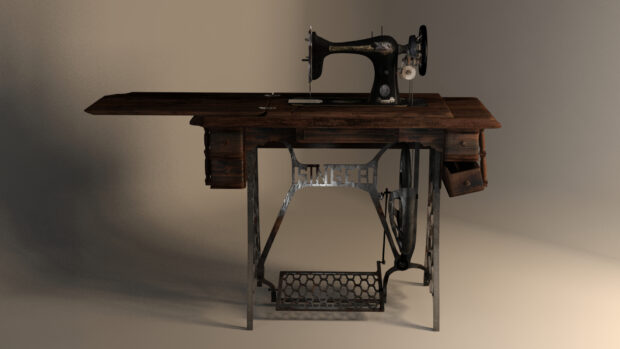Sewing is a manual process; it requires a certain high level of skills and concentration. Aside from being just a pleasant activity, some part of sewing can prove difficult to take care of or handle. As a beginner, the little challenges that come with sewing can easily get you frustrated and also make the learning experience tiring. However, it doesn’t always have to be so!
Sewing is a handcrafter practice that exercises the mind, stimulates creativity, and even helps in relieving stress.
However, in the course of this guide, we’ll be discussing a list of amazing tips and tricks that will assist you in overcoming the first step and make use of your creativity.

These sensational tips will aid your sewing process, makes it faster and fun! We have successfully compiled some clever tricks to make your life as a seamstress much more comfortable. They will assist you in becoming more agile, and you will have a lot of freedom and time to create original sewing projects without feeling stress.
As you go through these tips and learn, you will wonder how you could have lived without them.
EASY HEMMING SUPPLY
Imagine the feeling of making a mold for your hems yourself. The first thing when it comes to sewing tips is how to hem your pants. At first, you should make a template to be used on cardboard and mark them using a ruler. You need to make use of a thicker paper, a common ruler, draw the lines with the measurement of the hems. Then, position the fabric, and using a hot iron, you can make the fold of the size you want. This way, it is easier to make since you can do a variety of markings of each hem size that you wish to apply to the sewing project.
SEW ON BUTTONS FASTER
When you talk of an excellent finish for any piece, then buttons are the go-to – even if people see them as just decorations. However, applying the buttons manually or by hand can be tedious and a difficult process, which makes it challenging to apply.
Amazingly, there is a simple, stress-free, and neater way to sew the buttons using your best sewing machine. This way is much more aligned, simple, and can also be configured in a way that makes nailing several buttons easily and faster.
MAKING USE OF LARGER THREAD SPOOLS
Before now, you might have seen using small spools when sewing. This might be of advantage to you, but imagine the stress of having to stop working at intervals to change them. Instead of these small thread spools, make use of Overlock cones. If an overlock cone looks too big on the on, you can store them using a mug or a cup. All you have to do is to place the mug with the cone on your work area, under the pin, then you can attach the end of the thread to the sewing machine. The con will form perfectly, and the line will unfold on its own as you work. As you use it, it rotates, as if it were attached to the machine.
TRY DRAWING A PERFECT SEWING MARGIN
If the patterns you use in most instances do not come with an already-marked safety margin, then you have to trace one yourself. It is easy to do that.
Have a perfect stitch requires leaving a few inches of extra in the fabric, which is known as a safety margin as you sew. Some sewing patterns come with these marks. Otherwise, you can draw these margins on your fabric as you trace the patterns. This how to do this; Join two pencils together using an elastic tape or band and scratch the fabric. The outer line made with the pencils will be the right seam allowance, and it will be scratched once, without taking any measurements.
RUBBERBANDS AS A SEWING GUIDE
Among the list of sewing tips that are essential for the sewing, the process of making use of rubber bands as a sewing guide is essential. You should place elastic bands at the bottom of your machine to avoid passing your sewing limits without scratching your fabrics. With the help of a rubber band or elastic, you will correctly sew the width needed without your fabric moving. To increase and decrease the limits when sewing, all you have to do is to move the elastic through the base of the machine.
THE RIGHT SEWING THREAD
It surprises me to see a lot of sewing newcomers pay little or no attention to the kind of thread used when equipping the sewing machine. Buying the ideal tool and the perfect fabric has almost made sew properly, but without the right or ideal sewing thread, it can be disastrous as you learn to sew.
Although it is important to take note of the sewing thread color, however, a lot of people pay little or no attention to the quality of thread used in the sewing machine.
They also have to adapt to the fabric’s thickness and quality. It is important to get a solid basic set of good sewing threads that is also multipurpose from the start.
THREADING A NEEDLE EASILY
When it comes to sewing, this problem is common. It is easy to get a thread through the eye of a needle. It is usually more hopeless when you have sight-related issues.
If you’re finding it difficult to thread a needle head, here is how to easily do that. This tip will make all the difference. You should make use of a little hair spray at the end of the thread line. This way, the thread is firmer. This way, it is easier to pass it through the head of a needle if it’s not a problem. Best of all, this tip works for any type and line thickness.
SEWING AN ELASTIC BAND QUICKLY
If there is a need to add elastic to whatever you’re sewing, you need to handle it carefully. The main purpose of using an elastic is to provide elasticity to a particular part of the clothing. If the linear and horizontal stitch, you all attach the elastic, this way, it will prevent the elastic from stretching. All you should is to set your sewing machine to the zigzag stitch, and the elastic will have enough room to move around.
MAKE SURE YOU IRON YOUR WORK
To make the job very neat, you have to give time to ironing. Before sewing, it is of utmost importance to iron. It will help reduce the volume of the cloth and aid the easy passage of your machine. You can as well iron the clothes on the wrong side, reduce the temperature of the iron, and protect them using a dry patte, which is a small cotton drop which will protect from the contact of the iron).
HOW TO EASILY SEW A ZIPPER
Sewing a zipper requires a level of practice, which instigates some fear is some seamstress. A lot of people make use of alternatives (brackets, buttons, and even Velcro) in their projects. However, depending on the situation, a zipper is the only finish that will give you the results needed. To easily sew a zipper, you have to join both parts of the fabrics together with the use of a simple linear seam, then sew the zippers in between the fabrics. After that, you can cut and open the seam to discover the zipper below.
GET THE RIGHT TYPE AND SIZE OF NEEDLE
This tip is important when working on a thick fabric or fabrics. It is advised to increase the size of your needle for a piece of thick fabric. A small needle will either not pierce the fabric properly, or will even break—different needle for different fabric types. A universal needle can be used, which will serve very well.
PACK ALL YOUR SEAMS PROPERLY
This trick makes it easy and possible to flatten fabrics that are slightly thick before sewing them. This consists of using a hammer or a rubber mallet and tapping gently on the allowance of the seam. This will make the fabric flatten and aid the easy passage of the machine.
NB: try not to tap on the visible seams (topstitching); otherwise, they may deform.
CONCLUSION
As a beginner, or even an expert, these amazing sewing tips and tricks may look a lot to you; nothing to worry, with little effort into practicing, you will get into the trick, and this will reflect in the improvement of your skill.



